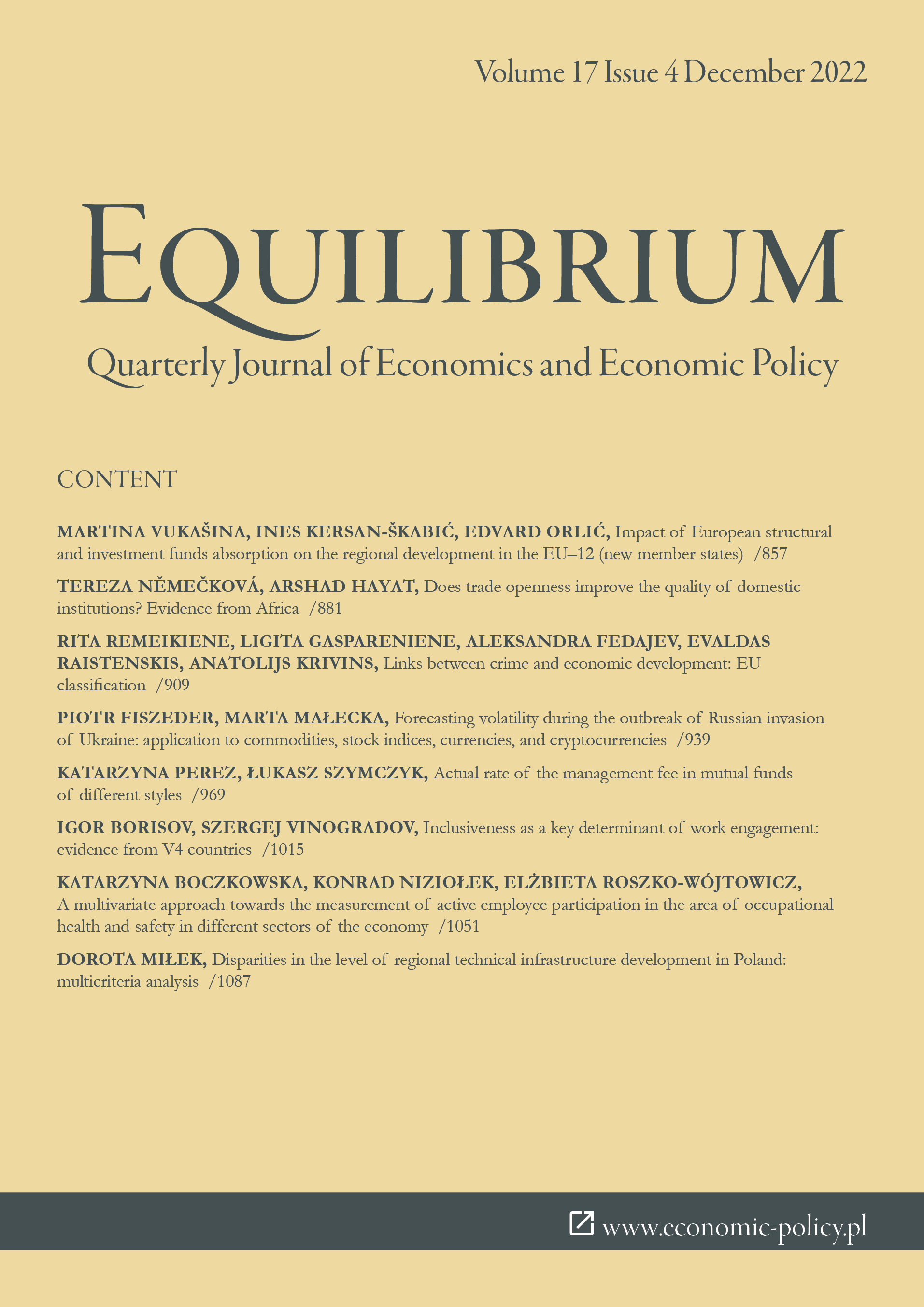Forecasting volatility during the outbreak of Russian invasion of Ukraine: application to commodities, stock indices, currencies, and cryptocurrencies
Forecasting volatility during the outbreak of Russian invasion of Ukraine: application to commodities, stock indices, currencies, and cryptocurrencies
Author(s): Piotr Fiszeder, Marta MałeckaSubject(s): National Economy, Financial Markets, Russian Aggression against Ukraine
Published by: Instytut Badań Gospodarczych
Keywords: volatility models; high-low range; robust estimation; invasion of Ukraine; war;
Summary/Abstract: Research background: The Russian invasion on Ukraine of February 24, 2022 sharply raised the volatility in commodity and financial markets. This had the adverse effect on the accuracy of volatility forecasts. The scale of negative effects of war was, however, market-specific and some markets exhibited a strong tendency to return to usual levels in a short time.Purpose of the article: We study the volatility shocks caused by the war. Our focus is on the markets highly exposed to the effects of this conflict: the stock, currency, cryptocurrency, gold, wheat and crude oil markets. We evaluate the forecasting accuracy of volatility models during the first stage of the war and compare the scale of forecast deterioration among the examined markets. Our long-term purpose is to analyze the methods that have the potential to mitigate the effect of forecast deterioration under such circumstances. We concentrate on the methods designed to deal with outliers and periods of extreme volatility, but, so far, have not been investigated empirically under the conditions of war.Methods: We use the robust methods of estimation and a modified Range-GARCH model which is based on opening, low, high and closing prices. We compare them with the standard maximum likelihood method of the classic GARCH model. Moreover, we employ the MCS (Model Confidence Set) procedure to create the set of superior models.Findings & value added: Analyzing the market specificity, we identify both some common patterns and substantial differences among the markets, which is the first comparison of this type relating to the ongoing conflict. In particular, we discover the individual nature of the cryptocurrency markets, where the reaction to the outbreak of the war was very limited and the accuracy of forecasts remained at the similar level before and after the beginning of the war. Our long-term contribution are the findings about suitability of methods that have the potential to handle the extreme volatility but have not been examined empirically under the conditions of war. We reveal that the Range-GARCH model compares favorably with the standard volatility models, even when the latter are evaluated in a robust way. It gives valuable implication for the future research connected with military conflicts, showing that in such period gains from using more market information outweigh the benefits of using robust estimators.
Journal: Equilibrium. Quarterly Journal of Economics and Economic Policy
- Issue Year: 17/2022
- Issue No: 4
- Page Range: 939-967
- Page Count: 29
- Language: English

